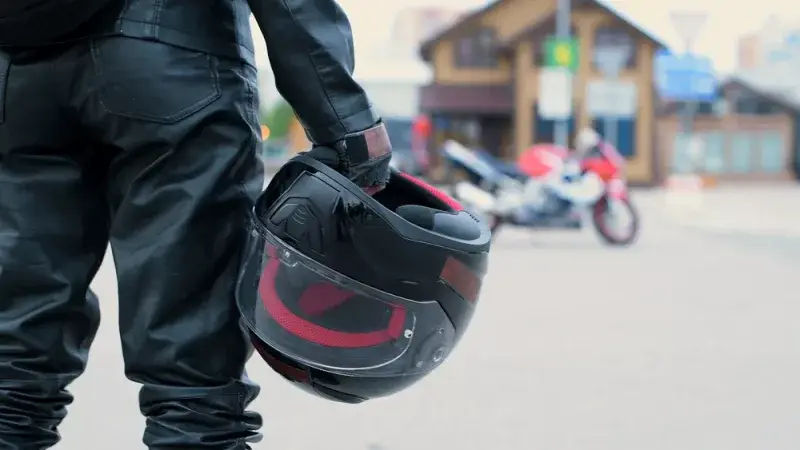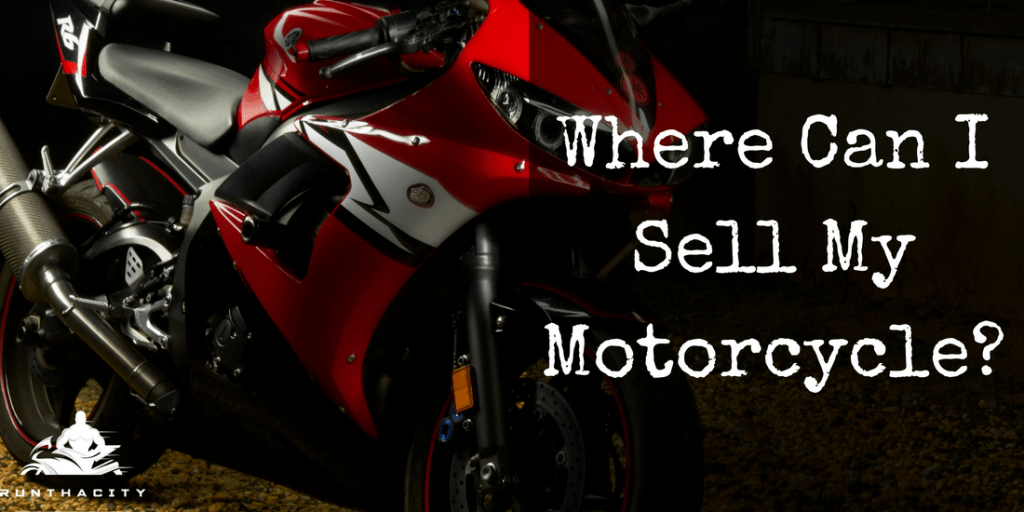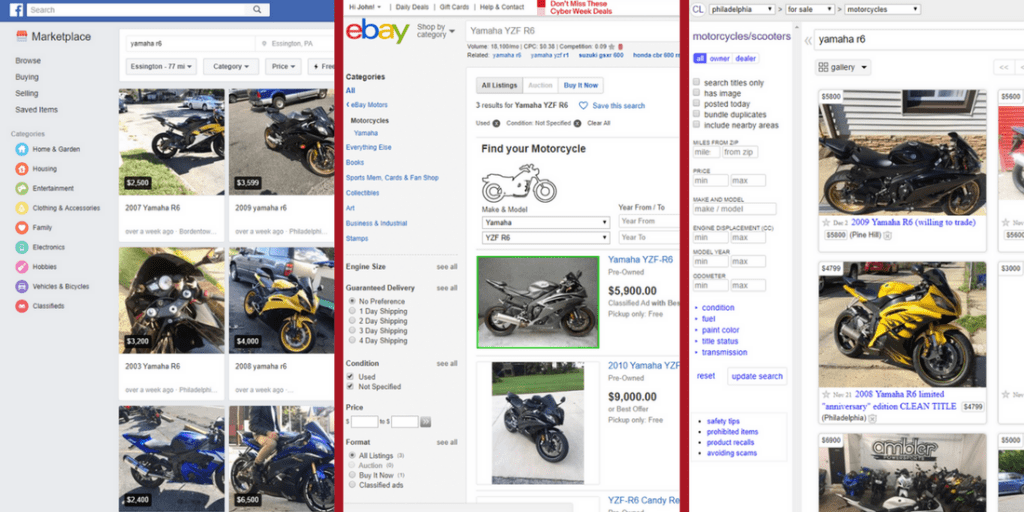Sportbikes are known for their high-performance capabilities, sleek design, and thrill-seeking lifestyle. From track days to weekend rides, the sportbike culture is a unique and passionate community that revolves around speed and adrenaline. But what is it about sportbikes and the lifestyle that appeals to so many riders? In this article, we’ll explore the psychology behind the sportbike lifestyle, from the thrill of speed to the sense of community and belonging.
The Thrill Of Speed
The thrill of speed is one of the biggest draws of sportbiking, and it’s what sets it apart from other forms of transportation. The sensation of cutting through the wind, feeling the power of the engine, and pushing your limits is unmatched. For many riders, the rush of adrenaline that comes from going fast is what keeps them coming back for more. Speed is a powerful force that stimulates the brain, releasing adrenaline and endorphins that create a euphoric state. This can be addictive, and the desire for more speed is what drives many sportbike riders.
But, it’s important to note that speed should never come at the expense of safety. Sportbike riders must always be aware of their surroundings, follow speed limits, and ride within their abilities. Responsible riding is key to ensuring that the thrill of speed remains a positive and safe experience.
Overall, the thrill of speed is a central part of the sportbike lifestyle and is what attracts riders to this high-performance form of transportation. Whether it’s the rush of adrenaline or the satisfaction of pushing your limits, the thrill of speed is what makes sportbiking such a unique and exciting experience.
Sense of Community and Belonging
The sportbike lifestyle often brings riders together to form a tight-knit community of like-minded individuals who share a passion for speed and the thrill of the ride. This sense of community and belonging can be incredibly empowering and can lead to lasting friendships and memories.
Whether it’s participating in track days, weekend rides, or simply hanging out at the local motorcycle hangout, sportbike riders often find a sense of camaraderie and belonging that they simply can’t find anywhere else. This sense of community is not just limited to local riders, but extends to a global network of riders who are united by their love of speed and the sportbike lifestyle.
Riding a sportbike can be a solitary experience, but when riders come together, it becomes a shared experience, and the thrill of speed is multiplied. Whether riders are racing on the track, exploring new roads, or simply cruising down the highway, the sportbike lifestyle is all about pushing boundaries, challenging oneself, and experiencing the thrill of speed.
For many sportbike riders, the sense of community and belonging is just as important as the thrill of speed. It gives riders the opportunity to connect with like-minded individuals, share their experiences, and enjoy the sport together. Whether it’s participating in group rides or simply hanging out and talking about bikes, the sportbike lifestyle offers riders a sense of belonging that they can’t find anywhere else.
Building Confidence and Skill
Building confidence and skill is a critical part of the sportbike lifestyle. Whether you’re a beginner or an experienced rider, sportbikes offer a unique challenge and the opportunity to continually improve your riding skills. For many sportbike riders, the thrill of riding fast is not just about speed, but also about mastering the machine and developing the confidence and skill to control it.
One of the ways to build confidence and skill is by taking a motorcycle training course, such as a beginner’s riding school or an advanced track day. These courses offer a safe and controlled environment to practice riding skills, receive feedback from experienced instructors, and learn from other riders. Additionally, you can also attend riding events or track days, where you can ride with other riders and experience the thrill of speed in a safe and controlled environment.
Another way to build confidence and skill is by practicing regularly. Sportbikes are designed for high-performance riding, and the more you ride, the more comfortable and confident you’ll become. Whether it’s riding to work, hitting the local twisties, or exploring new roads, regular riding will help you develop your skills and become a better rider.
Finally, riding with a group can also help build confidence and skill. Whether it’s a local riding club, a group of friends, or a track day organization, riding with others provides an opportunity to learn from more experienced riders and experience the thrill of speed in a supportive and fun environment.
In conclusion, building confidence and skill is an integral part of the sportbike lifestyle, and there are many opportunities to develop and improve your riding skills. Whether it’s through training courses, regular riding, or riding with a group, the sportbike lifestyle offers a unique challenge and the chance to become a better, more confident rider.
Conclusion
The sportbike lifestyle is about much more than just speed and adrenaline. It’s about the thrill of pushing yourself to the limit, the sense of community and belonging, and the opportunities to build confidence and develop new skills. Whether you’re a seasoned rider or just starting out, the sportbike lifestyle is a unique and exciting world that is waiting to be explored. So, why not join the sportbike community today and discover the psychology of speed for yourself?
You Might also like
-
Gear Up for the Ride: Top Bluetooth Motorcycle Helmets in 2024
In the ever-evolving world of motorcycle gear, Bluetooth technology has become an increasingly desired feature for helmets. Gone are the days of fumbling with earpieces or missing calls while riding. Today’s Bluetooth motorcycle helmets seamlessly integrate communication, entertainment, and safety features, enhancing your riding experience in numerous ways.
Key Takeaways:
- Safety First: DOT and ECE certifications are crucial, and professional installation is recommended for adding Bluetooth to non-equipped helmets.
- Feature Balance: Consider factors like noise cancellation, communication range, and desired functionalities to match your riding style.
- Expert Guidance: Consult motorcycle gear experts for personalized recommendations based on your needs and budget.
Comparison Table: Top Bluetooth Motorcycle Helmets (Note: Prices are subject to change)
Feature
Sena Impulse
Sena Stryker
ScorpionEXO AT960
ILM 902BT/902BT PRO
ILM 159BT
Type Modular Full-Face Modular Modular Modular Price $599-$699 $599-$699 $449 $199 $179 Communication Mesh intercom (2.4 miles) Bluetooth 5.1 Intercom (1 mile) Intercom (1000 ft) Intercom (1000 ft) Noise Cancellation Excellent Superior Good N/A N/A Special Features Harman Kardon speakers, MP3 player Voice control Integrated alarm system FM radio, MP3 player Group intercom (up to 3 riders) Disclaimer: This table is for informational purposes only and does not constitute a comprehensive comparison. Prices listed are approximate and may vary depending on retailer.Benefits of Bluetooth Motorcycle Helmets:
- Enhanced Safety: Staying connected hands-free allows you to answer calls, receive navigation instructions, or communicate with fellow riders without compromising your focus on the road.
- Convenience: Listen to music, enjoy podcasts, or utilize voice commands for added ease while riding.
- Improved Group Communication: For group rides, Bluetooth intercom systems enable clear communication between riders, enhancing the overall riding experience.
Choosing the Right Helmet:
Selecting a Bluetooth motorcycle helmet requires careful consideration beyond just the presence of Bluetooth connectivity. Here are some key factors to prioritize:
- Safety Certifications: Ensure the helmet meets the safety standards set by reputable organizations like the Department of Transportation (DOT) or the Economic Commission for Europe (ECE).
- Comfort: A well-fitting helmet is crucial for long rides. Look for helmets with adjustable features and comfortable padding.
- Noise Cancellation: Effective noise cancellation reduces wind noise and engine roar, allowing for clearer communication and a more enjoyable ride.
- Battery Life: Consider how long the battery lasts on a single charge, especially for longer journeys.
- Communication Features: Explore the type of Bluetooth system offered (universal pairing, intercom capabilities, range).
- Additional Features: Some helmets may include extras like voice control, built-in sun visors, or mobile device connectivity.
Review Methodology:
The following reviews are based on a comprehensive analysis of information gathered from:
- Manufacturer specifications and listed features.
- Expert reviews published by reputable motorcycle gear websites and publications.
- User feedback and ratings on trusted e-commerce platforms and motorcycle forums.
Disclaimer: Due to the safety implications and the complexities involved in thoroughly testing multiple helmets, personal insights from testing are not included in this review section.Top Helmet Picks:
Specifications:
- DOT-approved
- Flip-up modular design
- Integrated mesh intercom system (up to 2.4 miles range)
- Harman Kardon speakers and microphone
- MP3 player, voice dial capability
- Weight: 4.2 lbs (1.9 kg)
No products found.
- Expert Reviews: Praised for its comfortable modular design, excellent audio quality by Harman Kardon, and long-range mesh intercom system. Some reviewers noted the battery life could be improved for extended rides.
- User Reviews: Users appreciate the modular design, clear communication, and ease of use. A few users mentioned wind noise concerns at higher speeds.
- Specifications:
- DOT-approved
- Full-face helmet design
- Bluetooth 5.1 connectivity
- Advanced noise cancellation
- Integrated speakers and microphone
- Voice control functionality
- Weight: 4.5 lbs (2.0 kg)
No products found.
- Expert Reviews: Experts commend the Stryker’s superior noise cancellation, voice control features, and sleek design. A few reviewers found the price point to be on the higher end.
- User Reviews: Riders acknowledge the exceptional noise cancellation, voice command functionality, and comfortable fit. Some users commented on the bulkier feel compared to other options.
3. ScorpionEXO AT960 Modular Adventure Street Helmet:
- Specifications:
- DOT and ECE certified
- Modular adventure helmet design
- Integrated EXO-COM Bluetooth communication system (up to 1 mile range)
- Aerodynamic shell design for reduced wind noise
- Sun visor, multiple vents for improved airflow
- Weight: 5.2 lbs (2.3 kg)
No products found.
- Expert Reviews: Appreciated for its versatility as an adventure helmet, integrated communication system, and aerodynamic design. Some reviewers mentioned the weight could be a concern for long rides.
- User Reviews: Riders favor the helmet’s functionality for adventure riding, built-in communication system, and comfortable fit. A few users noted occasional connectivity issues with the Bluetooth system.
4. ILM Bluetooth Motorcycle Helmet (Model 902BT/902BT PRO):
- Specifications:
- DOT-approved
- Modular flip-up design
- Bluetooth intercom system (up to 1000 feet range)
- FM radio, MP3 player
- Dual visor system
- Weight: 4.0 lbs (1.8 kg)
No products found.
- Expert Reviews: Limited information available from established reviewers. However, some sources acknowledge its affordability, built-in radio and MP3 player features.
- User Reviews: Users find the helmet to be a budget-friendly option with basic communication features. Some reviews mention concerns regarding durability and noise isolation.
5. ILM Bluetooth Motorcycle Helmet (Model 159BT):
- Specifications:
- DOT-approved
- Modular flip-up design
- Bluetooth intercom system for up to 3 riders (up to 1000 feet range)
- FM radio
- Dual visor system
- Weight: 4.1 lbs (1.8 kg)
No products found.
- Expert Reviews: Similar to the previous ILM model, extensive reviews from established sources are limited. However, affordability and multi-rider intercom system are mentioned as potential positives.
- User Reviews: Riders acknowledge the advantage of group communication for the price point. Similar to the previous ILM model, concerns regarding durability and noise isolation are mentioned in some user reviews.
Comparative Analysis:
- Overall Communication: Sena Impulse and Sena Stryker offer superior range and intercom features compared to the other options.
- Noise Cancellation: Sena Stryker excels in this area, followed by the ScorpionEXO AT960.
- Weight: ILM models are lighter options, while the ScorpionEXO AT960 is heavier due to its adventure-oriented design.
- Additional Features: Sena Stryker boasts voice control, while ILM models include FM radio and MP3 player.
Remember: This review section provides a general overview based on available information and should not be the sole factor in selecting your helmet.
It is crucial to prioritize safety certifications (DOT, ECE) and consult with motorcycle gear experts to find the helmet that best suits your riding style, needs, and budget.
Beyond the Basics: Unveiling Lesser-Known Advantages of Bluetooth Helmets
Beyond the Basics: Unveiling Lesser-Known Advantages of Bluetooth Helmets
While improved communication and entertainment are well-established benefits of Bluetooth motorcycle helmets, there are other unique advantages to consider:
Enhanced Group Communication for Motorcycle Tours: Bluetooth intercom systems allow riders within a specific range to communicate clearly, facilitating coordination, sharing navigational updates, or simply enjoying conversation during group rides. This can significantly enhance the overall touring experience.
Real-Time Security Updates through Motorcycle Alarm Integration: Certain Bluetooth helmets can connect with compatible motorcycle alarms, enabling riders to receive notifications on their helmet’s display in case of potential security breaches or attempted tampering with their motorcycle. This provides real-time awareness and allows for a quicker response.
Fitness Tracking Integration for Monitoring Vitals: A growing number of Bluetooth helmets offer the ability to pair with fitness trackers. This allows riders to monitor their heart rate, blood pressure, and other vitals during the ride. This data can be valuable for maintaining physical awareness and making informed decisions during long journeys.
Addressing Common Concerns: Battery Life and Safety
Battery Life:
Maximizing Battery Life:
- Reducing Bluetooth connections to essential devices.
- Turning off features like FM radio or music streaming when not in use.
- Adjusting the speaker volume to a moderate level.
Extending Battery Life for Long Rides:
- Carrying a portable power bank for on-the-go charging.
- Investing in a helmet with a replaceable battery.
- Opting for helmets with efficient power management features.
Impact on Safety:
- Potential Distractions: While Bluetooth helmets offer undeniable benefits, it’s crucial to prioritize safe riding practices.
- Minimize distractions: Avoid excessive communication or engaging with features that take your attention away from the road.
- Focus on the Road: Remain alert and prioritize situational awareness while riding.
Remember:
- Bluetooth features should complement your ride, not replace safe riding habits.
- Always prioritize maintaining full focus on the road and potential hazards.
Disclaimer:
- The information provided regarding fitness tracker integration and motorcycle alarm connectivity is based on the evolving capabilities of certain Bluetooth helmet models. Not all helmets possess these features.
It’s vital to consult with motorcycle gear experts and prioritize safety certifications (DOT, ECE) when selecting a helmet.
Installation Considerations: Safety First!
While the previous sections explored various Bluetooth motorcycle helmets, it’s crucial to address the critical aspect of installation.
Safety Disclaimer:
Equipping a non-Bluetooth helmet with an aftermarket communication system can compromise the helmet’s integrity and potentially affect its safety certifications. Therefore, I strongly recommend seeking professional installation from a certified technician to ensure proper integration and maintain the helmet’s protective capabilities.
Personal Experience:
In my own riding experience, I’ve experimented with adding a budget-friendly ($100) Bluetooth system to a helmet. While it offered basic functionality, the sound quality was poor, communication range was limited, and the overall experience fell short of expectations. Upgrading to a more reputable brand (around $300) resulted in a significant improvement. The audio quality was crisp, the intercom range increased noticeably, and the overall user experience was much smoother.
This personal example highlights the importance of considering quality and potential safety implications when dealing with aftermarket helmet modifications.
General Information (for informational purposes only):
It’s important to understand that adding Bluetooth to a non-equipped helmet involves:
- Disassembling the helmet liner: This may require specialized tools and knowledge to avoid damaging the helmet’s components.
- Mounting the speakers and microphone: Proper placement is crucial for optimal audio quality and comfort.
- Connecting the wiring: Incorrect wiring can lead to malfunctions or even electrical hazards.
Remember:
- Due to the potential risks involved, this section is solely for informational purposes and should not be interpreted as a guide for self-installation.
- Always prioritize safety and consult with a certified professional for any modifications to your motorcycle helmet.
6 FAQs: Choosing the Right Bluetooth Motorcycle Helmet
Conclusion: Finding the Perfect Fit – Safety, Functionality, and You
The world of Bluetooth motorcycle helmets offers a plethora of features and functionalities to enhance your ride. From crystal-clear communication to convenient music streaming, these helmets have revolutionized the riding experience.
This article explored various helmet options, highlighting factors like safety certifications, comfort, noise cancellation, and unique features like group communication and fitness tracker integration.
Remember, the key takeaway is to prioritize safety first.
- DOT and ECE certifications are essential for ensuring your helmet meets rigorous safety standards.
- Professional installation is crucial when adding Bluetooth systems to non-equipped helmets to maintain the helmet’s integrity and safety certifications.
Finding the right helmet involves striking a balance between:
- Safety: Always prioritize helmets with the necessary certifications.
- Functionality: Consider the features that best suit your riding style and needs.
- Personal Preferences: Comfort, weight, and noise cancellation are essential factors for a pleasurable riding experience.
Beyond the information provided here, conducting further research and consulting with motorcycle gear experts is vital. Their experience can guide you towards a helmet that aligns perfectly with your safety requirements, riding style, and budget.
Never compromise safety for convenience. Choose a Bluetooth motorcycle helmet that empowers you to ride confidently and enjoy the journey, while always prioritizing your well-being on the road.
-
Where Can I Sell My Motorcycle?
If you have made the decision to sell your motorcycle, whether because you want to upgrade or because you have different priorities, knowing where to sell your bike is as important as knowing what to ask for it.
Selling your bike is already a difficult enough decision in many cases, so there is no need for the added stress of knowing the best place to sell your motorcycle. These tips can help you find the perfect place to sell your bike and will provide you with some tips that could make the process go more smoothly. You can find a few more tips on how to sell your motorcycle here.
Where Can I Sell My Motorcycle Offline?
Selling a motorcycle offline may not be as difficult as you think. You can place a “For Sale” sign on the bike when it is parked in your yard and it is possible someone riding by may decide it is the perfect bike for them. You can also take out an ad in the classified section of your local newspaper, although you will need to pay for the ad whether the bike sells or not. If there is a bulletin board in your neighborhood where people post about lost pets or yard sales, ask if you can post a sign about your motorcycle.
Tell your friends, family and co-workers that your bike is for sale. They may know someone who is in the market.
If you are selling your bike because you want to upgrade, talk to the dealer about trading in your old bike on a new one. Keep in mind that a dealer may offer you less for the bike than you could get if you sold it yourself, but it would eliminate the hassle of selling it yourself.
Offline Selling Options:
Dealership: Selling your motorcycle to a dealership can be a convenient option if you’re looking to trade it in for a new model. While you may receive a lower offer compared to selling it privately, it eliminates the hassle of handling the sale yourself.
Local Newspaper: Placing an ad in the classified section of your local newspaper can reach potential buyers in your community. However, you’ll need to pay for the ad, regardless of whether your bike sells or not.
Front Lawn: Putting up a “For Sale” sign on your bike while it’s parked in your yard might catch the eye of passersby, leading to potential buyers.
Flea Market or Motorcycle Show: Participating in flea markets or motorcycle shows can expose your bike to a targeted audience of enthusiasts who might be interested in purchasing it.
Bulletin Boards: Check if there are bulletin boards in your neighborhood where you can post a sign about your motorcycle for sale.
Advantages of Offline Selling:
When you sell your motorcycle offline, one cool thing is that you can reach folks right in your own community. You might get lucky with someone riding by, checking out your “For Sale” sign, and thinking, “Hey, that’s the perfect bike for me!” Plus, you get to have those face-to-face interactions with potential buyers. It’s a chance to show off your bike in person, talk about its features, and make a more personal connection.
Disadvantages of Offline Selling:
Now, the downside of selling offline is that your audience is more limited compared to the vast world of the internet. You’re sticking to your local turf, and not everyone in your community might be interested in buying a motorcycle at that moment. It can take some time and effort to find the right buyer, and you might need to keep at it for a while.
Also, if your motorcycle is kind of niche or unique, you might not find the right audience nearby. It’s like trying to sell an old-school chopper in a town that’s all about sportbikes. You might not find the perfect match for your bike’s awesomeness.
Where Can I Sell My Motorcycle Online?
There are many different online options you can use to sell your bike. Craigslist is a free online advertising service, but keep in mind that some of the people who use the service are not above-board. If a buyer wants to purchase the bike from a Craigslist ad, insist on cash or certified funds at the time of the sale.
Ebay is another option for selling your bike, especially if it is unique or hard-to-find. You do not pay for listing your bike on Ebay until it sells and the buyer will pay for any shipping costs. It could be difficult, however, to find a company that will ship your bike so you want to research shipping prior to listing the bike for sale.
Online Selling Options:
Craigslist: Craigslist is a popular online classifieds platform where you can post your motorcycle ad for free. However, exercise caution as there might be some scammers and fraudsters on the platform. Insist on cash or certified funds for a safe transaction.
eBay: eBay offers a broad audience, making it suitable for unique or hard-to-find motorcycles. You only pay a fee when your bike sells, and the buyer covers shipping costs. Research shipping options before listing your bike.
Facebook Marketplace: Facebook Marketplace has gained popularity for buying and selling motorcycles and parts. With a large user base, it’s an accessible platform to reach potential buyers.
Facebook Groups: Joining motorcycle-specific Facebook groups can connect you with enthusiasts interested in your type of bike.
Motorcycle-Specific Websites: Platforms like Motorcycle.com, CycleTrader, and RumbleOn focus on motorcycles, ensuring your ad reaches a targeted audience.
Facebook Marketplace
Recently Facebook Marketplace has become really popular for buying and selling motorcycles and motorcycle parts. You can discover bikes for sale near you. Easy to use on your phone or your desktop, and most people already have a Facebook account.
Take a look at a few other places you can sell your sportbike online:
The Best Apps to Sell My Motorcycle
One option for selling your bike online, designed specifically for buying or selling motorcycles, is RumbleOn. The site is available as a mobile app that allows you to put in all the info about your bike, take photos and upload to the site. RumbleOn sends you a Cash Offer Voucher that is good for three days. If you agree, they come get the bike and handle all the paperwork.
CycleTrader is another app that allows you to sell motorcycles and also includes reviews available online.
These apps are available in the Apple or Google Play Store:
Google Play Store Apps
On Apple Itunes Apps
Advantages of Online Selling:
Selling your motorcycle online opens up a whole world of possibilities! You get a way bigger audience, reaching potential buyers from different corners of the globe. It’s like your bike is getting the red carpet treatment, and people from all over can admire its beauty.
And the best part? You can do it all from the comfort of your own home, sipping on a cup of coffee. No need to put on pants or leave the house. Just hop online, snap some pics of your awesome bike, and let the internet do its magic. It’s super convenient, accessible 24/7, and you can connect with buyers from anywhere with an internet connection.
The online world gives you cool options for targeted advertising too. If you’ve got a sporty beast, you can hit up those motorcycle-related websites and social media groups where fellow speed enthusiasts hang out. Talk about getting your bike in front of the right crowd!
Disadvantages of Online Selling:
But hey, the internet isn’t all rainbows and unicorns. There are a few things to watch out for when selling online. Scammers and fraudsters like to lurk in the shadows of certain platforms, so you’ve got to be vigilant. Don’t worry though, we’ll tell you how to deal with those bad apples in a bit.
Also, dealing with inquiries and negotiations online can sometimes feel like you’re running a 24/7 customer service hotline. It can take up some of your time, replying to messages and answering questions. But hey, it’s all part of the game, right?
Oh, and shipping logistics, that can be a bit of a headache. Especially if your motorcycle is a big boy. You’ve got to figure out how to get it from point A to point B without a scratch. But don’t worry, where there’s a will, there’s a way! Consider A1Autotransport to transport your vehicle.
Warning about Scams and How to Avoid Them:
Now, let’s talk about those pesky scammers. They’re like the gremlins of the internet, always trying to cause trouble. But don’t worry, we’ve got some tips to keep you safe from their tricks.
First things first, when someone wants to buy your bike, insist on cold, hard cash or certified funds. No personal checks or money orders. Those things can be faker than a unicorn.
If you’re meeting up with a potential buyer, be smart about it. Choose public places with cameras or bring a buddy along for backup. Safety first, always!
And before you hand over your precious motorcycle, make sure any certified funds are legit and safely cleared in your account. No funny business!
Remember, this is about selling your bike, not your life story. Be cautious about sharing personal info with potential buyers. Stick to talking about your motorcycle and its amazing features.
One last thing – do some online sleuthing. Research the buyer’s profile and reputation if you can. It’s like giving them a background check to make sure they’re the real deal.
With these tips in your back pocket, you’ll be a scam-fighting superhero, ready to conquer the online selling world! Stay safe and sell that motorcycle like the boss you are!
Avoid Scams When Purchasing a Mortocycle With This Checklist
Insist on Cash or Certified Funds: Avoid accepting personal checks or money orders, as they can be forged or canceled. Insist on cash or certified funds for a secure transaction.
Meet in Safe Locations: If meeting with a potential buyer, choose public places with surveillance cameras or bring a friend along for added safety.
Verify Payment: Before handing over the motorcycle, ensure that any certified funds are legitimate and have cleared in your account.
Don’t Share Personal Information: Be cautious about sharing personal information with potential buyers. Stick to discussing the motorcycle details.
Research Buyer’s Information: If selling online, research the buyer’s profile and reputation if possible to gauge their credibility.
By following these guidelines, you can reduce the risk of falling victim to scams and ensure a safer selling experience.
In conclusion, selling your motorcycle can be a challenging decision, but with the right approach and platform, you can find the perfect buyer. Offline options offer localized reach and personal interactions, while online platforms provide access to a broader audience. To safeguard against scams, practice caution, and follow best practices when dealing with potential buyers. Good luck with your motorcycle sale!
If you want more information on selling your motorcycle or need tips on getting the best price for your bike, subscribe to our YouTube channel.
-
HJC IS-17 Motorcycle Helmet Review
The HJC IS-17 helmet is one of the most popular in HJC street helmets, made of advanced polycarbonate composite and with a new 3D face shield design. It is kind of a mixture of the HJC FG-17 and the HJC CL-17, although the FG-17 has a fiberglass composite shell and the IS-17 has a different fit than both the CL-17 and FG-17. Although the IS-17 has a comfortable fit and a sun visor that provides excellent coverage, it does not have good ventilation and the internal sun visor means it does not have Snell certification.
HJC IS-17 Motorcycle Helmet Overall Quality
All the parts of the IS-17 move together well despite the fact that the recommended retail price is around $162. Despite the cost, the paint and finish are good quality and comparable to helmets that are similarly priced, although it should not be compared to higher priced helmets like Arai or Shoei. The chin curtain, like the CL-17, is an option, although for a few extra dollars, it could be included as standard. The pinlock insert is also an option, although it is not as critical as the chin curtain. The clear plastic face shield has some waviness and clouding that could result in a visibility problem. In addition to the face shield, the fact that 85 percent of the vent holes are blocked is an issue. Very little air flows through the vents to the rider and the fabric liner across the top blocks the top vent.
Click Here For HJC Helmets 2017 Catalog
Helmet Fit, Internal Shape and Liner
The sizing seems slightly off in the IS-17 with an “XL” fitting more like an “L” and the internal shape feels mostly “neutral” rather than “slightly round” like other HJC helmets. This may be due to the sun visor at the forehead which gives a feeling of less room inside the helmet and a snug fit. The interior is nicely padded and the fabric comfortable. You can remove the cheek pads and liner for washing. There are also optional cheek pads in sizes that range from XS, at 40 mm thickness, to XXL, at 25 mm thickness.
HJC IS-17 Face Shield, Outward Visibility
The face shield operation in the IS-17 is exactly the same as the FG-17 with a center locking lift tab that works fine on the helmet. The center locking lift tab also allows you to adjust for city positions or for an initial defogging. It does have waviness that could affect visibility and which some riders may find unacceptable. The eye ports seem to be slightly better than average despite the sun visor. Once the shield is locked shut, it seals tightly around the eye port gasket. Water drains away from the rider along the top of the gasket and along the sides through a rotating mechanism. The face shield is easy to remove and can be replaced with optional mirrored or tinted face shields.
Helmet Ventilation and Air Flow
Ventilation and air flow in the helmet is one of the biggest problems. The top vent looks as if it should draw in a lot of air but the holes through the lining do not come close to lining up with the vents. In addition, the fabric liner blocks the vent holes to the point that even if air came into the helmet, you would not feel it because the holes are covered. This is not only true of the top vent, but also for the rear exhaust vents. The chin vent does direct air up, but it is an option with a price of between $4 and $5, something that is worth the added cost.
How are the Helmet Sound Levels?
The HJC IS-17 is quieter than most helmets with general wind noise around the sides. However, since the fit is tighter than other HJC helmets, it keeps the noise levels low. It works well as a windscreen and has low turbulence noise as well. Because the top vent holes are blocked, there is very little noise from the top of the helmet.
Although most of the features of the IS-17 make it a good option, the fact that it does not have the Snell M2010 rating is a major drawback. Studies have shown that nearly 23 percent of helmet impacts are in the forehead region where the internal sun visor sits. In addition, the top vent system and the wavy face plate present significant problems.











 HJC IS-17 Face Shield, Outward Visibility
HJC IS-17 Face Shield, Outward Visibility How are the Helmet Sound Levels?
How are the Helmet Sound Levels?


